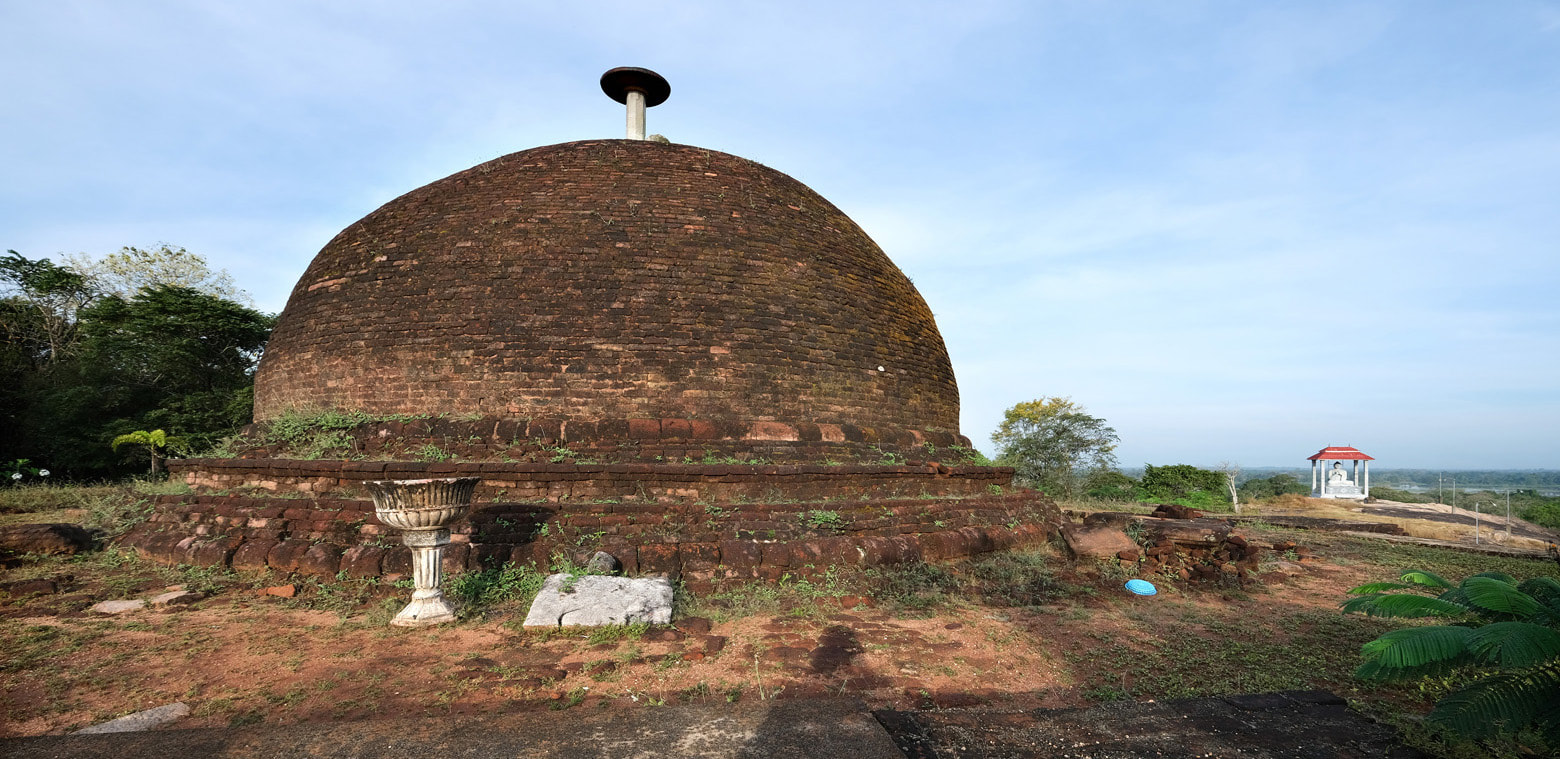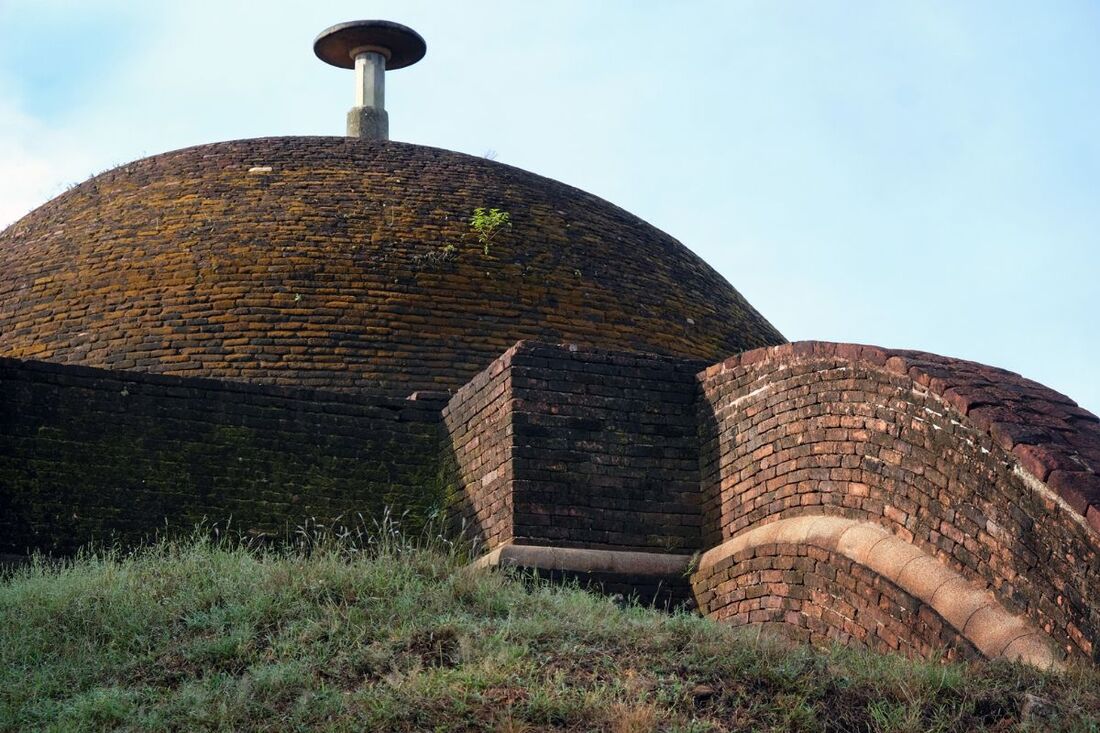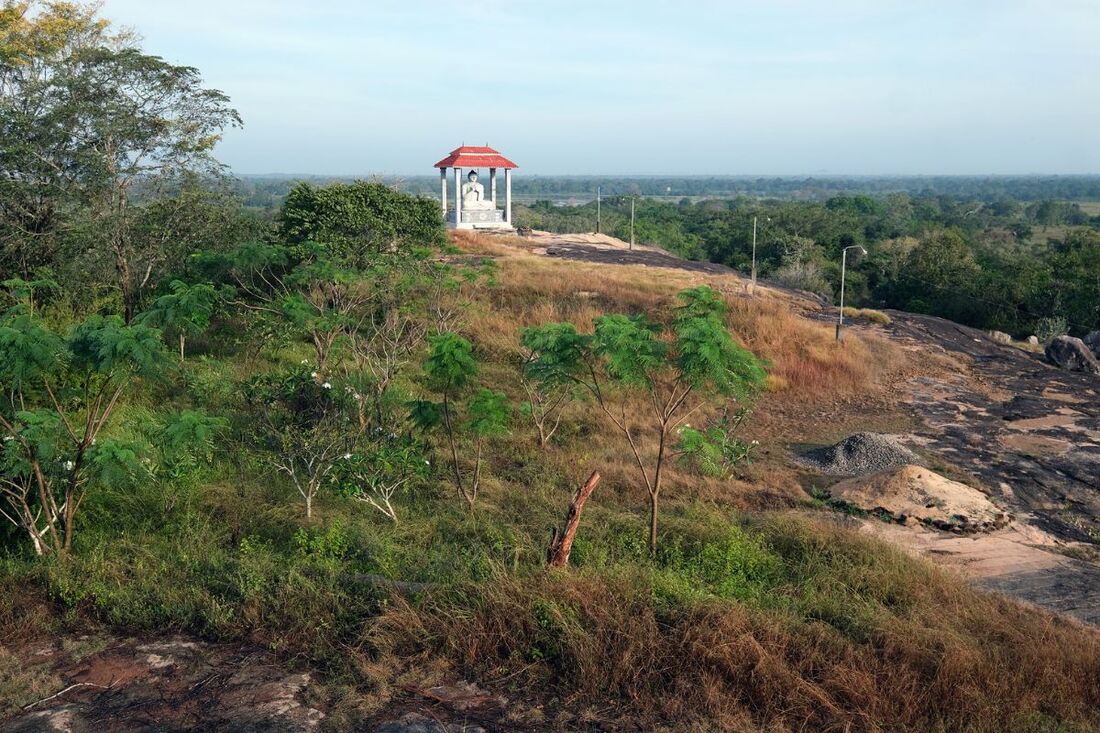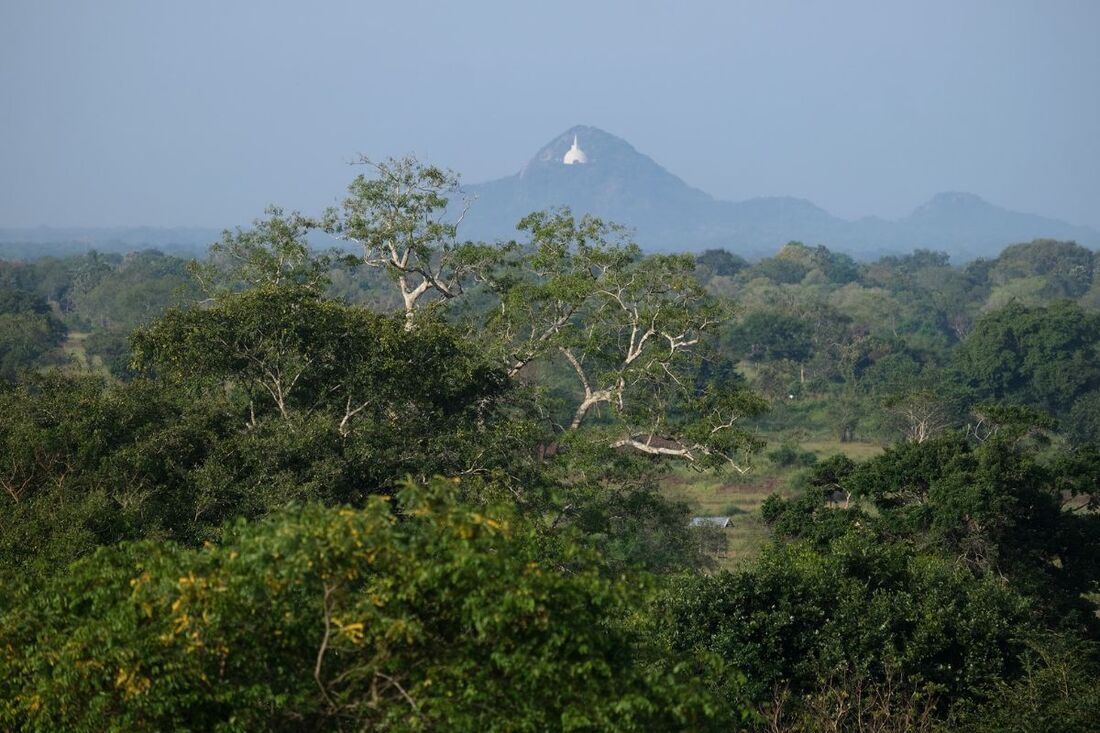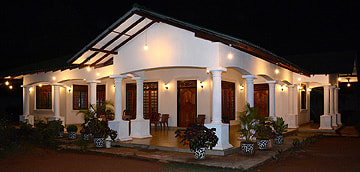To be sure, Thammenakanda (Thammenna Hill) is not at all a place that we could call a must-see for normal holiday makers and even for those looking for hidden trasures there is no need to put it on a shortlist. The detour is only worth considering for people addicted to ancient sites. What can be seen at Thammenakanda, is an ancient stupa from the Anuradhapura period. There are literally thousands of them all over the island. However, one thing is special. Most stupas of this age are in ruins now or restored as white domes with a lot of cement in a modern fashion. In contrast, the brick stupa of Thammenakanda was restored in a very professional way by archaeologists only recently. This is to say, this small stupa can be seen in its original appearance, and there are not so many of this original shape in Sri Lanka. Apart from the scientifically restored stupa. Thammenakanda has ancient inscriptions from the same period and, as it it situated on a small hill, nice views over the surrounding lonesome plains, with the hills of Mihintale in the background.
Location
Thammennakanda is a very remote site near the small hamlet of Hettikattiya, which has a population of only 100 people. The area borders the bushlands of the Vanni region and is sparsely populated.
Though this area in the northeastern part of Anuradhapura District is very remote today, it was good farmland and densely populated during the Anurdahapura period. This can be seen from the fact that the area is crowded with ancient tanks of small and medium size, such as Hettikattiya Wewa just to the east and Bandara Ratmale Wea to the northwest and Ounch Hammillewa Wewa to the south. Altogether, there are around 20 ancient reservoirs in a distance of less than 3 km (2 miles), as the crow flies.
Though this area in the northeastern part of Anuradhapura District is very remote today, it was good farmland and densely populated during the Anurdahapura period. This can be seen from the fact that the area is crowded with ancient tanks of small and medium size, such as Hettikattiya Wewa just to the east and Bandara Ratmale Wea to the northwest and Ounch Hammillewa Wewa to the south. Altogether, there are around 20 ancient reservoirs in a distance of less than 3 km (2 miles), as the crow flies.
Road distances from Mihintale and Anuradhapura are 26 km (16 miles) and 37 km (23 miles) by road. Visitors have to drive 6.5 km (4 miles) on a gravel road, starting at the A12 highway, which connects Puttalam at the north-west coast with Trincomalee at the norht-east coast via Anuradhapura and Mihintale. The road distance to Gonagiri, an ancient monastery directly at the A12 highway, is only 7 km (4.5 miles). The next town is Kahatagasdigiliya in 9 km (6 miles) distance from Thammenakanda Purana Viharaya.
Rock Inscriptions
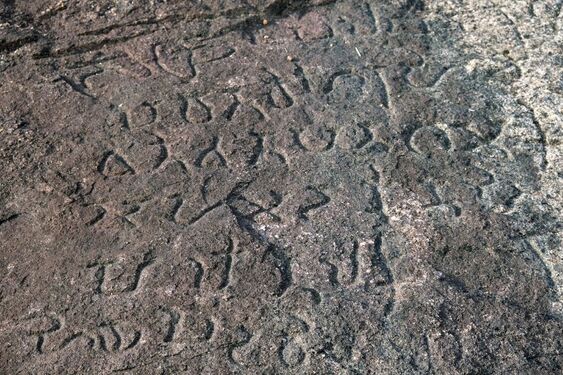
There are two noteworthy rock inscriptions from the 2nd century AD at the rock surface very close to the stupa. One is left by King Mahallaka Naga, who reigned only from 134/35-140/41, after his son in law, the famous King Gajabahu had died. King Mahallaka Naga was already an old man when he ascended the throne. As most inscriptions from this period of Sri Lankan history, Mahallaka Naga's rock inscription is written in an old version of Sinhala in Brahmi characters. The inscription says, that the water tax from tanks then called Pajalaka Wewa and Pala Awiya Wewa in the district of Upala Awa and Manikara Gamaka Wewa in the Utarapara revenue division, is freed from income tax, to be offered on behalf of the monks of Pracheena Pabbatha Viharaya by the king. The Pracheena Pabbatha temple is most likely today's Thammennakanda Purana temple. In a way, this is a typical inscription of the period of the early period of the first Lambakanna Dynasty. There are many inscriptions mentioning agricultural donations to Buddhist temples from this period. Concerning the use of income von irrigational ponds, the 2nd century AD is indeed the richest period in such rock inscriptions at all.
The second rock inscription of Thammennakanda is from the same period and also deals with an agricultural donation to the monastery. The inscription is from King Kanitta Tissa, who ruled 164-192. He was a son of the above-mentioned King Mahallaka Naga and his second successor, after Mahallaka Naga's oldest son, Bhatika Tissa, had died. According to the plate placed by the Archaeological Department, the inscription of Kannitta Tissa reads: "Sena's son Dulaba living in the village of Walimahamadaka in Uttarapura area has donated lands in extant of six hundred "Kareesa" to the Pracheena Pabbatha Viharaya situated in the Upalabajaka area." The inscription further reveals that offerings granted by the King Kanitta Tissa for renovation works of the relevant temple and other offerings were given for the purposes of alms of the monks.
The second rock inscription of Thammennakanda is from the same period and also deals with an agricultural donation to the monastery. The inscription is from King Kanitta Tissa, who ruled 164-192. He was a son of the above-mentioned King Mahallaka Naga and his second successor, after Mahallaka Naga's oldest son, Bhatika Tissa, had died. According to the plate placed by the Archaeological Department, the inscription of Kannitta Tissa reads: "Sena's son Dulaba living in the village of Walimahamadaka in Uttarapura area has donated lands in extant of six hundred "Kareesa" to the Pracheena Pabbatha Viharaya situated in the Upalabajaka area." The inscription further reveals that offerings granted by the King Kanitta Tissa for renovation works of the relevant temple and other offerings were given for the purposes of alms of the monks.
Ancient StupA in an original Design
Apart from the views to the plains of Anuradhapura and the Vanni area, the main attraction of Thammennakanda is the said restored stupa, the form of which is the original classic bubble shape. What is remarkable is that the shape has never been "modernised" by later kings in different forms like most other historical stupas in Sri Lanka, who have long histories of renovations and alterations. However, before it's restoration, the ancient stupa of Thammennakanda was in a dilapitaded condition, partly as a result of the barbaric acts of treasure hunters.
The central granite shaft, called Yupa Gala, and the circular granite plate, called Gal Chattra, were fallen down, but the were found intact and could be reused in the renovation. The said Yupa Gala and Gal Chatra design of the spike atop the hemispherical dome is older than the typical Sri Lankan Hathas Kotuwa and Koth Keralla ensemble constructed mainly from bricks. The latter is found at almost all ancient Sri Lankan stupas even from earliest periods as a result of later enlargements. The original stupa spine as seen at Thammannakanda resembles more the classical Indian stupa as known from World Heritage Site Sanchi in particular.
The archaeological team also discovered the stone relic casket which was buried in the stupa. Luckily, it had not been discovered by the trasure hunters. In the casket a small Buddha statue in Samdhi Mudra was found, which measured 6.5 cm in height. In the stupa, also two slab inscriptions were found, mentioning the names of the kings Mahanaga and Kanishkatissa and Mahanaga, the latter being credited with having carried out renovations of the stupa. Furthermore, pillar inscriptions can also be found in the surroundings of the Thammennakanda stupa.
The archaeological team also discovered the stone relic casket which was buried in the stupa. Luckily, it had not been discovered by the trasure hunters. In the casket a small Buddha statue in Samdhi Mudra was found, which measured 6.5 cm in height. In the stupa, also two slab inscriptions were found, mentioning the names of the kings Mahanaga and Kanishkatissa and Mahanaga, the latter being credited with having carried out renovations of the stupa. Furthermore, pillar inscriptions can also be found in the surroundings of the Thammennakanda stupa.
